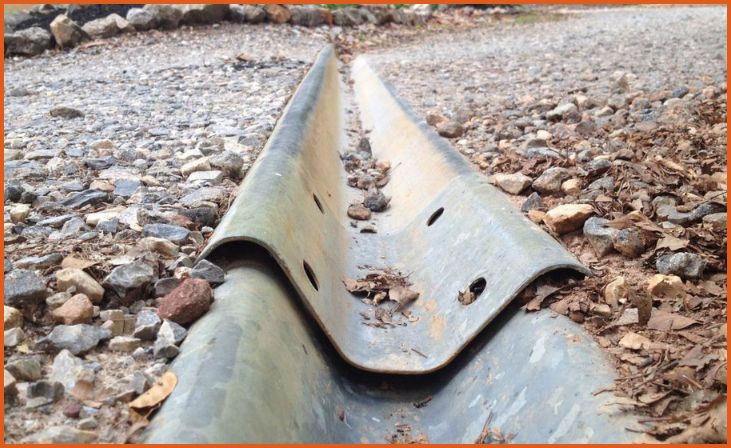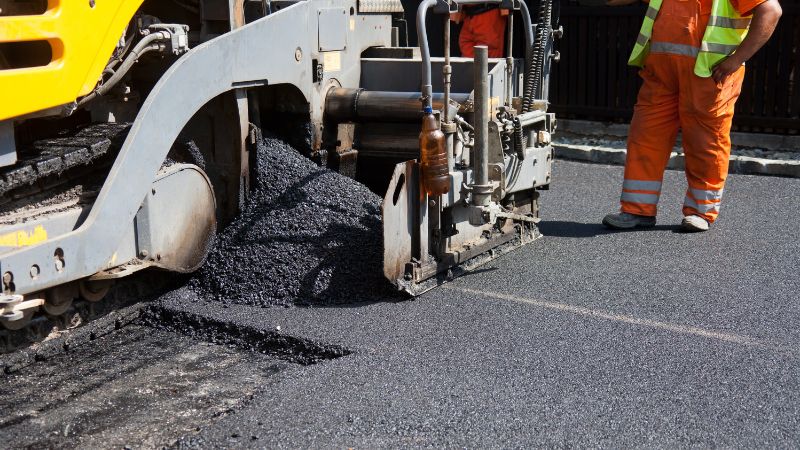Dealing with excess water on your driveway can be frustrating and damaging to your property. Proper drainage is essential to prevent water pooling, erosion, and structural issues. Fortunately, there are several effective solutions to address these water woes and keep your driveway in top condition. From simple fixes like adding a channel drain to more advanced methods like installing a French drain, each option offers distinct benefits. In this blog, we’ll explore 7 Driveway Drainage Solutions For Your Excess Water Woes. By understanding these options, you’ll be able to choose the best approach for your needs and ensure a dry, safe driveway year-round.
7 Driveway Drainage Solutions For Your Excess Water Woes
1. Channel Drains

Channel drains, also known as trench drains, are a popular and effective solution for managing excess water on driveways. These drains consist of a long, narrow channel with a grate on top that captures water and directs it away from the surface. Channel drains are particularly useful for driveways with a noticeable slope or where water tends to pool in specific areas.
They can be installed along the edge of the driveway or across its width to intercept water before it can cause damage. The installation involves digging a trench, setting the drain in place, and connecting it to a drainage pipe or a stormwater system. Channel drains are durable, low-maintenance, and can handle heavy rainfall, making them a reliable choice for effective water management.
2. French Drains
French drains are another effective method for managing driveway water drainage. They consist of a perforated pipe surrounded by gravel, which collects and redirects water away from the driveway. The pipe is buried in a trench filled with gravel, allowing water to seep through the soil and enter the pipe, where it is then channeled away. French drains are highly effective at preventing water accumulation and reducing soil erosion.
They are ideal for driveways that experience frequent water pooling or where the soil has poor drainage properties. The installation process requires digging a trench, laying the pipe, covering it with gravel, and ensuring proper grading to direct water flow. French drains are a long-lasting solution and can be customized to fit various drainage needs.
3. Surface Drains
Surface drains are designed to capture and redirect water that collects on the surface of your driveway. These drains are typically installed in areas where water tends to pool, such as low spots or depressions. Surface drains come in various styles, including catch basins and grated drains, which are placed at strategic points to collect water and funnel it away from the driveway. Catch basins are often used in combination with pipes that carry water to a designated drainage area. Surface drains are relatively easy to install and maintain, making them a practical choice for addressing localized water issues. They are especially useful in preventing water damage and maintaining the overall condition of your driveway.
Read Also: Common Asphalt Paving Mistakes
4. Permeable Pavers

Permeable pavers are an environmentally friendly solution for driveway drainage. These pavers are designed to allow water to pass through their surface and seep into the underlying soil, reducing surface runoff and preventing water accumulation. Permeable pavers come in various materials, including concrete, brick, and natural stone, and are installed with gaps between the pavers filled with gravel or sand. The design enables rainwater to be absorbed and filtered naturally, promoting groundwater recharge and minimizing erosion. Installing permeable pavers involves preparing a well-drained base, laying the pavers, and filling the gaps with an appropriate aggregate. This solution not only addresses excess water issues but also enhances the aesthetic appeal of your driveway.
5. Gutter Systems
Gutter systems are a traditional yet effective method for managing water runoff from driveways. By installing gutters along the edges of your driveway, you can collect and redirect water to a designated drainage area or stormwater system. Gutter systems typically include downspouts that channel water from the gutters to the ground, where it can be directed away from your driveway. Properly installed and maintained gutters help prevent water damage and erosion by ensuring that water does not overflow onto your driveway. Regular cleaning and inspection of gutters are essential to ensure their effectiveness. Gutter systems are a cost-effective solution for managing water runoff and protecting your driveway from potential water-related issues.
6. Swales
Swales are shallow, broad ditches designed to redirect and manage surface water. They are particularly effective for large driveways or areas with significant water runoff. Swales work by capturing water and allowing it to slowly infiltrate into the soil, reducing the risk of flooding and erosion. They are usually constructed with a gentle slope and lined with grass or other vegetation to help with water absorption. The installation of a swale involves grading the area to create a shallow channel, planting vegetation to stabilize the soil, and ensuring proper flow direction to direct water away from the driveway. Swales are a natural and sustainable solution for managing excess water and can be customized to fit various landscape designs.
7. Dry Wells

Dry wells are underground structures designed to capture and temporarily store excess water before it gradually seeps into the ground. They are ideal for driveways where water tends to pool and where traditional drainage methods may not be feasible. Dry wells are typically constructed by digging a deep hole, placing a perforated container or well in the hole, and filling the surrounding area with gravel or crushed stone.
The water collected in the dry well percolates through the gravel and into the surrounding soil, reducing surface runoff and preventing water accumulation. Proper installation involves ensuring adequate capacity for the amount of water expected and maintaining the well to prevent clogging. Dry wells provide an efficient, unobtrusive solution for managing excess water and enhancing driveway longevity.
Read Also: Tips For Choosing The Right Asphalt Paving Contractor
Conclusion
Choosing the right drainage solution for your driveway is crucial for preventing water damage and maintaining its longevity. Whether you opt for a channel drain, French drain, or any other method, implementing an effective drainage system will save you from costly repairs and keep your property in excellent condition. By addressing excess water issues proactively, you’ll enhance the functionality and durability of your driveway. Review these seven solutions to find the best fit for your situation and enjoy a well-managed, water-free driveway.
FAQs
What is the easiest driveway drainage solution?
Installing a channel drain is one of the simplest and most effective solutions for managing excess water on a driveway. It captures and redirects water away from the surface.
How often should I maintain my driveway drainage system?
Regular maintenance, ideally twice a year, is recommended to ensure your drainage system remains clear and functions properly. As part of this process, you should remove any obstructions and debris.



